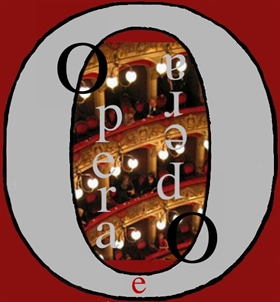THE BATTLE OF LEGNANO in Florence – The only opera written by Verdi in favor of the Risorgimento cause returns to Maggio after almost sixty years –
By William Fratti and Renata Fantoni –
The only opera written by Giuseppe Verdi in favor of the Risorgimento is back on stage at the Maggio after almost sixty years, so expectations are quite high.
Unfortunately, already from the symphony, Renato Palumbo's conducting appears a little devoid of the dynamic character of the years in prison, therefore it is often monotonous. There is no doubt that in some pages the good Maestro seeks the chisel, but in a lyrical tragedy like this an excessive deepening of subtleties risks obtaining opposite results, or rather a certain musical gentleness where indeed one would expect more a more rebellious vivacity and combative.
Giuseppe Gipali is the correct tenor as always and his Arrigo does what he must in terms of bel canto, from intonation to phrasing, from the use of the word to the clean squillo, unfortunately without ever standing out, making for an appreciable performance.

Less successful is Vittoria Yeo's Lida, from which feats were expected. Unfortunately the soprano is often waning, she lacks colors and phrasing resulting flat, some high notes are croaking, she is probably not in top form and we hope to hear her again in better performances, as previously.
Good performance by Giuseppe Altomare in the role of Rolando, although not shining with a particular vocal luminosity, while the phrasing is very well set, of excellent eloquence.

Marco Spotti's Grand Inquisitor voice is almost wasted for the brief, albeit fundamental, part of Federico Babarossa and the second finale, with "Il destiny d'Italia son io!" it is indisputably the best part of the whole performance.
The accompanying parts are sufficient, led by Giada Frasconi's Imelda and Min Kim's Marcovaldo, with Egidio Massimo Naccarato's First Consul, Nicolò Ayroldi's Second Consul, Adriano Gramigni's Podestà, Rim Park's squire and herald.
The performance of the Choir of the Maggio Musicale Fiorentino prepared by Lorenzo Fratini was adequate.

Marco Tullio Giordana's show, with sets and lights by Gianni Carluccio and costumes by Francesca Livia Sartori and Elisabetta Antico, has something already seen and dusty, but above all one perceives a certain boredom resulting from an almost non-existent directing job. The masses are almost always only placed, the soloists are often immobile, the backstages are non-existent, the props are much more than minimalist, entrances and exits do not always follow the music, leaving a void on stage several times.
The opening of the curtain takes place on the historical map of Milan besieged by Frederick I in 1158, but for most of the musical introduction no one enters the stage. The choir dressed in shades of white, the lights and the backgrounds blend in a unicum without thickness and without depth. From the outset, as in the rest of the show, it is evident that the instructions in the libretto are not followed, contrary to what Giordana declared in the director's notes. Throughout the performance the spaces are never defined in their three-dimensionality, arches resting on suspended pillars, flying trees, imaginary columns and verandas, lack of objects on stage, no interaction with the space, no perception of the Genuis loci, of where, interiors or external. The space does not articulate and the actors are forced into a disconcerting static state. The place represented by the bricks is the only environment where the scenes take place; the lights are not very incisive, they do not create obvious cuts and are almost always suffused; the always monochromatic clothes do not give sufficient prominence to the main characters who are crushed on the chorus and become part of it; while the chorus in turn becomes part of the scenography.
A missed opportunity, which in any case pleases the audience who warmly applauds all the performers.
William Fratti and Renata Fantoni
PHOTOS © Maggio Musicale Fiorentino

